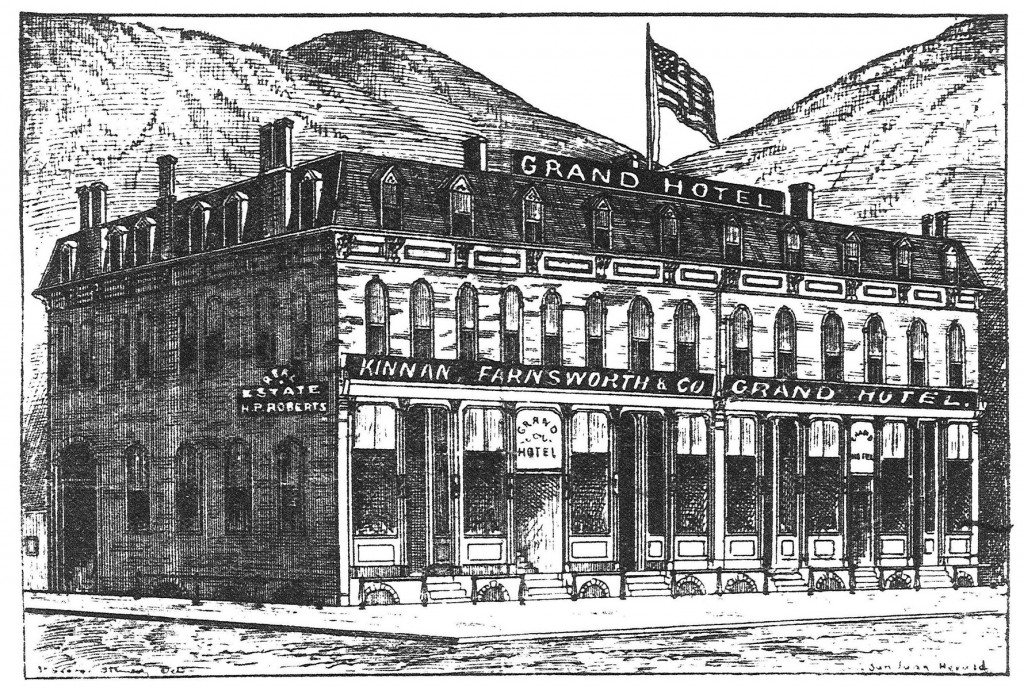As with many successful industrialists, William Sparks Thomson was highly diversified in his interests and business acquisitions. Crown Lavender Salts, Crown Perfumes, the cage crinoline and Thomson’s Glove Fitting corset were highly sought after by society. Although his interests in railways, hotels and rental properties diverged from the fashionable world, they too brought the necessities of life to people everywhere.
Railways quickly became a necessity in the nineteenth century. Passengers and freight relied on railway cars driven by steam locomotives. Thomson began manufacturing railway buffer springs that absorbed impacts between the cars. Probably not an impressive item until one begins to count the number of railway cars and locomotives that were used throughout the world and how each car needed a buffer spring at each end.
Emery wheels and emery grinding machines had a similar worldwide use. Machine parts, tools and household knives all needed to be sharpened on emery wheels. Established in 1860, Thomson and Company manufactured railway buffer springs, emery grinding machines and emery wheels in Glasgow, Scotland at the Crown Iron Works. In 1874, the name was changed to Thomson, Sterne & Co. Ltd. A silver exhibition medal was awarded to Thomson, Sterne & Co. Ltd. at the Exposition Universelle 1878 in Paris for emery grinding machinery. A gold medal for Clerk’s two-stroke gas engine was awarded at the 1882 Crystal Palace Electrical Exhibition of London. Thomson retired from the business in 1882.
Perhaps it was this connection with the railroads that brought Thomson to Silverton, the social and government seat of San Juan County, high in the mountains of southwest Colorado. The first rush of miners came into the area in 1874 finding gold, silver, copper, lead and zinc. Between 1882 and 1889, lead was the metal most produced, but silver was the metal which produced the greatest amount of money.
The Denver & Rio Grande railroad made its way into the isolated San Juan Mountains in the summer of 1882, arriving in Silverton on July 13th. Silverton became the staging and transportation center for removing the ore mined in the county. The railroad also brought in building materials and goods required by this rapidly growing area. Railroads were so much more efficient and reliable through the mountain passes than pack horses and wagons!
William Sparks Thomson had several business interests in Silverton. He was one of six investors in the Martha Rose Smelter and the only investor not from the Washington, D.C. area. This was not one of Thomson’s better investments because his partners skipped town quietly in the night. His other interests in town proved substantially more profitable. During the same week that the railroad came, Thomson broke ground for a 100’ wide by 75’ deep three story brick building, known as the Thomson Block.
Originally the building was to have four retail stores on the first floor with large display windows in the front and rear. County and private offices on the second floor had arched windows. The third floor, also intended for county offices, had dormer windows. A saloon would be in the basement, where arched windows about twelve inches above the ground provided natural light. Building plans changed as Silverton briskly evolved during those wild mining days which drew great influxes of people.

The Thomson Block 1883 [46]
The Grand Hotel opened on July 1st, 1883 with 40 finely decorated hotel rooms on the third floor. The second floor was reconfigured to include an office, parlor and two large front and center hotel rooms. The dining room, now able to seat 100, was relocated to the second floor. A saloon with billiard tables remained in the basement. A two story building was annexed to the Thomson Block from across the alley, connected by an enclosed bridge. The first floor had the kitchen, pastry room and laundry room. The second floor had six richly furnished rooms for hotel guests.
William Sparks Thomson was the proprietor until he transferred the building and many of his other Colorado properties to his son, Charles E. Thomson. The Thomson Block building still stands strong today as The Grand Imperial Hotel.
William Sparks Thomson invested his personal money wisely and widely. His real estate investments exemplified this strategy, owning numerous rental properties and large unimproved tracts of land in Colorado, Illinois, Massachusetts, New York and Washington.
A 1908 appraisal of his extensive holdings in the state of Washington showed annual rents from Seattle properties in the tidal lands of Elliot Bay generating $1,700/month in 1907. Also included in the appraisal were large tracts of unimproved land in King County, where Seattle is located, and in Snohomish County, where the city of Everett is located.
[46] “The Thomson Block.” San Juan Herald. 15 November 1883, 6.
